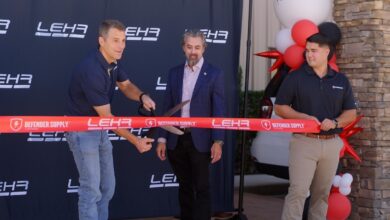MEMA Renews Call for Action on Proposed V2V Communications Rule
The Motor & Equipment Manufacturers Association (MEMA) has called for action on a federal proposal to require vehicle-to-vehicle (V2V) communications in all new passenger vehicles.
The National Highway Traffic Safety Administration’s (NHTSA) proposed rule would establish a new federal motor vehicle safety standard (FMVSS) No. 150 such that V2V communication capability would be required on all new light vehicles to allow the exchange of standardized Basic Safety Message (BSMs) with surrounding vehicles. This allows similarly equipped vehicles to see and talk to each other. There has been no action on the rule since it was proposed Jan. 12, 2017.
In its comments to NHTSA in 2017, MEMA indicated that suppliers are invested in and prepared for a connected vehicle environment – and a critical component of that is V2V communications.
“Motor vehicle suppliers are committed to vehicle safety and are key developers of the technologies needed to avoid and mitigate crashes. V2V technology is one of the critical components to enhance vehicle safety and eliminating and reducing fatalities and injuries on U.S. roadways,” said MEMA President and CEO Steve Handschuh. “But waiting will cost lives. Now is the time to take action on this rule.”
Suppliers of both light and heavy vehicle components and systems are actively engaged in multiple cooperative activities. They have provided significant resources towards academic and industry research projects and government-industry joint endeavors, according to MEMA. This includes, but is not limited to, the Crash Avoidance Metrics Partnership (CAMP), the U.S. DOT Intelligent Transportation Systems Joint Program Office (ITS-JPO), various safety pilot driver clinics and academic research projects, and the NHTSA Connected Vehicles Safety Pilot Project. Suppliers also are key participants and collaborators in various standards development activities, such as SAE International.
MEMA has reinforced the importance of deploying currently available technology, such as Dedicated Short Range Communication (DSRC), and retaining the 5.9 GHz spectrum for intelligent transportation systems, and of interoperability and security.
“Although potential V2V technology alternatives may become available at some undefined point in the future, deployment of a 5.9 GHz, DSRC V2V system is critical to achieve the next level of vehicle safety enhancements necessary to reduce fatalities on U.S. roadways today,” MEMA’s submitted comments state. “This technology is well understood and has been rigorously tested in real-world conditions by our vehicle supplier members and their original equipment manufacturer customers.”



